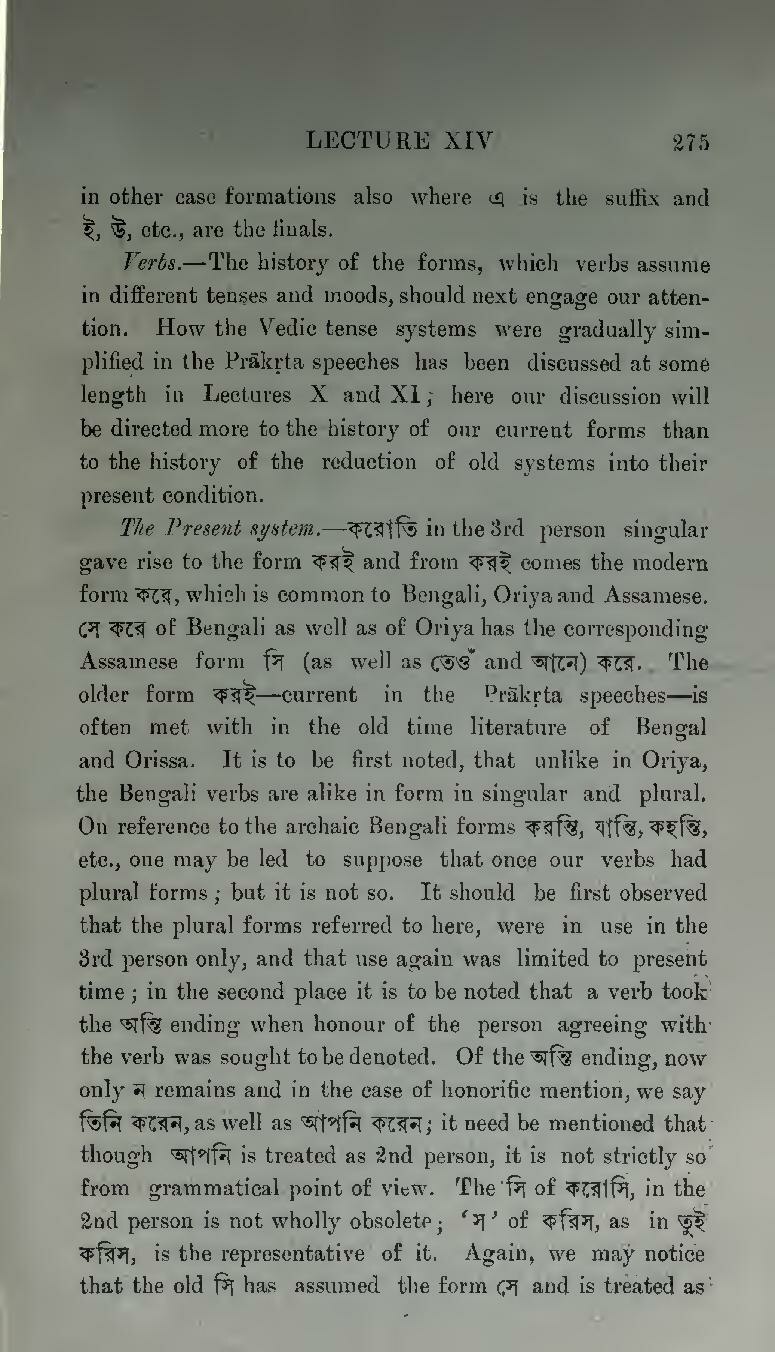in other case formations also where এ is the suffix and ই, উ, etc., are the finals.
Verbs.—The history of the forms, which verbs assume in different tenses and moods, should next engage our attention. How the Vedic tense systems were gradually simplified in the Prākṛta speeches has been discussed at some length in Lectures X and XI; here our discussion will be directed more to the history of our current forms than to the history of the reduction of old systems into their present condition.
The Present system.—করোতি in the 3rd person singular gave rise to the form করই and from করই comes the modern form করে, which is common to Bengali, Oriya and Assamese. সে করে of Bengali as well as of Oriya has the corresponding Assamese form সি (as well as তেওঁ and আনে) করে. The older form করই—current in the Prākṛta speeches—is often met with in the old time literature of Bengal and Orissa. It is to be first noted, that unlike in Oriya, the Bengali verbs are alike in form in singular and plural. On reference to the archaic Bengali forms করন্তি, যান্তি, কহন্তি, etc., one may be led to suppose that once our verbs had plural forms; but it is not so. It should be first observed that the plural forms referred to here, were in use in the 3rd person only, and that use again was limited to present time; in the second place it is to be noted that a verb took the অন্তি ending when honour of the person agreeing with the verb was sought to be denoted. Of the অন্তি ending, now only ন remains and in the case of honorific mention, we say তিনি করেন, as well as আপনি করেন; it need be mentioned that though আপনি is treated as 2nd person, it is not strictly so from grammatical point of view. The সি of করোসি, in the 2nd person is not wholly obsolete; 'স' of করিস, as in তুই করিস, is the representative of it. Again, we may notice that the old সি has assumed the form সে and is treated as
